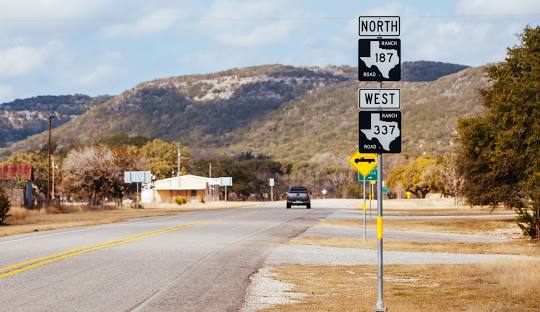Helmet Laws
Motorcycle helmet use laws by state
March 2021
| State | Helmet Law | Motorcycle vehicles not covered by the helmet law |
|---|---|---|
| Alabama | all riders | all are covered |
| Alaska | 17 and younger | all are covered |
| Arizona | 17 and younger | moped, defined by the state as having an engine displacement of 50 cc or less, brake horsepower of 1.5 or less, and a maximum speed of 25 mph |
| Arkansas | 20 and younger | all are covered |
| California | all riders | all are covered |
| Colorado | 17 and younger and passengers 17 and younger | all are covered |
| Connecticut | 17 and younger | all are covered |
| Delaware | 18 and younger | moped, defined by the state as a pedal or non-pedal bicycle having two tandem wheels and an engine displacement of less than 55 cc or an electric motor rated between 751 and 2000 watts, if the operator is 17 or older |
| District of Columbia | all riders | all are covered |
| Florida | 20 and younger | moped, defined by the state as having an engine displacement of 50 cc or less, brake horsepower of 2 or less, and maximum speed of 30 mph, if the operator is 16 or older |
| Georgia | all riders | moped, defined by the state as having an engine displacement of 50 cc or less, brake horsepower of 2 or less and maximum speed on 30 mph |
| Hawaii | 17 and younger | all are covered |
| Idaho | 17 and younger | moped, defined by the state as having an engine displacement of 50 cc or less, brake horsepower of less than 2, and maximum speed of 30 mph |
| Illinois | no law | no law |
| Indiana | 17 and younger | all are covered |
| Iowa | no law | no law |
| Kansas | 17 and younger | all are covered |
| Kentucky | 20 and younger | moped, defined by the state as having an engine displacement of 50 cc or less, brake horsepower of 2 or less, and maximum speed of 30 mph |
| Louisiana | all riders | all are covered |
| Maine | 17 and younger | motorized bicycle, defined by the state as having brake horsepower of 1.5 or less and maximum unassisted speed of 25 mph; may have pedals |
| Maryland | all riders | all are covered |
| Massachusetts | all riders | all are covered |
| Michigan | 20 and younger | moped, defined by the state as having an engine displacement of 50 cc or less and maximum speed of 30 mph, if the operator is 19 or older |
| Minnesota | 17 and younger | all are covered |
| Mississippi | all riders | all are covered |
| Missouri | 25 and younger | motorized bicycles, defined by the state as having an engine displacement of 50 cc or less, brake horsepower less than 3, and maximum speed of 30 mph |
| Montana | 17 and younger | moped, defined by the state as having brake horsepower of 2 or less and maximum unassisted speed of 30 mph |
| Nebraska | all riders | all are covered |
| Nevada | all riders | all are covered |
| New Hampshire | no law | no law |
| New Jersey | all riders | all are covered |
| New Mexico | 17 and younger | moped, defined by the state as having an engine displacement less than 50 cc and maximum speeds of 30 mph |
| New York | all riders | class C limited use motorcycle, defined by the state as having maximum speeds of 20 mph |
| North Carolina | all riders | all are covered |
| North Dakota | 17 and younger | all are covered |
| Ohio | 17 and younger | all are covered |
| Oklahoma | 17 and younger | motor-driven cycle, defined by the state as having an engine displacement greater than 35 cc but less than 150 cc or electric motor that produces more than 1000 watts moped, defined by the state as having an engine displacement of 50 cc or less, brake horsepower of 2 or less and maximum speed of 30 mph |
| Oregon | all riders | all are covered |
| Pennsylvania | 20 and younger | all are covered |
| Rhode Island | 20 and younger | all are covered |
| South Carolina | 20 and younger | motorcycle three-wheel vehicle, defined by the state as having detachable side cars, saddle-type seat, and handlebars or motorcycle-type steering |
| South Dakota | 17 and younger | all are covered |
| Tennessee | all riders | all are covered |
| Texas | 20 and younger | all are covered |
| Utah | 20 and younger | all are covered |
| Vermont | all riders | motor-driven cycle, defined by the state as having an engine displacement of 50 cc or less, brake horsepower of 2 or less, and maximum speed of 30 mph |
| Virginia | all riders | all are covered |
| Washington | all riders | all are covered |
| West Virginia | all riders | all are covered |
| Wisconsin | 17 and younger | moped, defined by the state as having an engine displacement of 130 cc or less, maximum speed of 30 mph, and fully operative pedals |
| Wyoming | 17 and younger | moped, defined by the state as having an engine displacement of 50 cc or less, brake horsepower of 2 or less, and maximum speeds of 30 mph |
Notes
- Alaska’s motorcycle helmet use law covers passengers of all ages, operators younger than 18, and operators with instructional permits. ↩
- Delaware, every motorcycle operator or rider age 19 and older must carry an approved helmet. ↩
- Florida, the law requires that all riders younger than 21 years wear helmets, without exception. Those 21 years and older may ride without helmets only if they can show proof that they are covered by a medical insurance policy. ↩
- Kentucky, motorcycle helmet laws also cover operators with instructional/learner’s permits. ↩
- Maine cover operators with instructional/learner’s permits and operators in their first year of license. Maine’s motorcycle helmet use law also covers passengers 17 and younger and passengers riding with operators who are required to wear a helmet. ↩
- Michigan, the law requires that all riders younger than 21 wear helmets, without exception. Those 21 and older may ride without helmets only if they carry additional insurance and have passed a motorcycle safety course or have had their motorcycle endorsement for at least two years. Motorcycle passengers who want to exercise this option also must be 21 or older and carry additional insurance. ↩
- Minnesota helmet laws cover operators with instructional/learner’s permits. ↩
- Missouri, riders younger than 26 and instruction permit holders, regardless of age, must wear protective headgear when the vehicle is in motion. Operators who are 26 and older may operate a motorcycle without protective headgear if they maintain proof of financial responsibility. No person shall be stopped, inspected, or detained solely to determine compliance. ↩
- North Dakota’s motorcycle helmet use law covers all passengers traveling with operators who are covered by the law. ↩
- Ohio’s motorcycle helmet use law covers all operators during the first year of license and all passengers of operators who are covered by the law. ↩
- Pennsylvania’s motorcycle helmet use law covers all operators during the first two years of license unless the operator has completed the safety course approved by PennDOT or the Motorcycle Safety Foundation. ↩
- Rhode Island’s motorcycle helmet use law covers all passengers (regardless of age) and all operators during the first year of license (regardless of age). ↩
- Texas exempts riders 21 or older if they can either show proof of successfully completing a motorcycle operator training and safety course or can show proof of having a medical insurance policy. A peace officer may not stop or detain a person who is the operator of or a passenger on a motorcycle for the sole purpose of determining whether the person has successfully completed the motorcycle operator training and safety course or is covered by a health insurance plan. ↩
- Wisconsin helmet laws cover operators with instructional/learner’s permits. ↩



